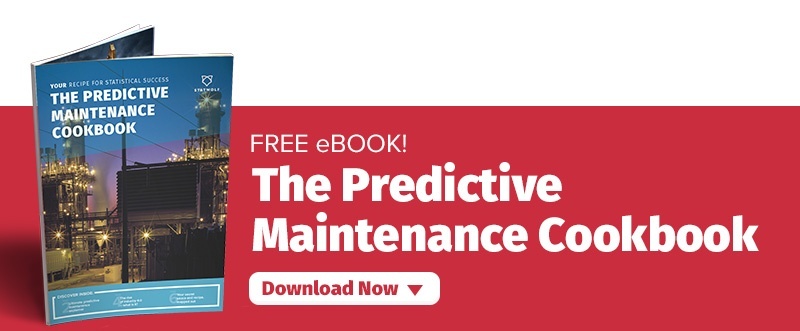Who should take the lead when implementing a predictive maintenance regime?
When most people think of predictive maintenance, industry applications in factories likely come to mind. But the use-cases go far beyond that.
An emerging example? Medicine, or MedTech to be precise.
An Israeli health-tech company, Medial EarlySign, is trying to use machine learning and IoT to apply predictive maintenance to people. Its first product, ColonFlag, identifies people with a 10-fold higher risk of undiagnosed colon cancer.
ColonFlag compares new blood tests against a patient’s previous diagnostics and Medial’s database of 20 million tests to evaluate the patient’s likelihood of developing colon cancer.
“Our algorithms can automatically scan all the patient parameters,” says Nir Kalkstein, co-founder and CTO of Medial. “[We] detect subtle changes over time to find correlative patterns for outcomes we want to predict. [We] find similar events in the past and then identify from the data correlations that can predict these events.”
The technology is still in its infancy with the ultimate intention of using machine learning to revolutionise healthcare – and human life, by predicting potentially curable diseases like diabetes, high blood pressure, and cancer before they become a threat. Of course, on a practical level, predictive maintenance can be used to keep expensive hospital machinery like MRI scanners running more efficiently too.
The convergence of machine learning and MedTech is a fascinating development in a wide field that speaks to the inherent usefulness of data science and the principles of predictive maintenance – to fix an issue before it becomes a concern.
Preventive vs. predictive in real terms
While the ColonFlag example above is more of a metaphorical use-case for predictive maintenance, it showcases the depth of machine learning and what it can accomplish. In reality, predictive maintenance is currently most useful in an industry environment, potentially saving manufacturers millions in avoided downtime and replacement costs.
Predictive maintenance analyses datasets to predict when a machine will need repairs, which fills the gaps of preventive maintenance.
Indeed, predictive maintenance is an obvious step for manufacturers dealing with high-capital assets. In 2016, TransCanada acquired Columbia Pipeline Group, creating a natural gas transmission company that oversees approximately 57,000 miles of pipeline. To put that number into perspective, it’s roughly the size of the entire road network in all of Ireland.
Maintaining such a large network of pipeline comes with a unique set of challenges. Stratus Technologies were tasked with the job of upgrading TransCanda’s entire automation and turbine network.
Since the upgrade, TransCanada now collects data from every turbine, pump, and compression station and feeds it back to a centralised control room. The data is then integrated and analysed using GE’s Predix platform to identify trends and enable predictive maintenance. TransCanada’s savings are estimated to be around $16-$17 million since implementing the programme.
In terms of TransCanada, it was the company’s CFO who was one of the primary drivers of the project to switch to predictive, championing a multi-million-dollar investment with the intention of harbouring a significant ROI.
Predictive maintenance: who takes charge?
Given that predictive maintenance spend is estimated to be worth $4.9 billion by 2021, it’s safe to see why TransCanada’s CFO took the lead on the project.
However, the CFO would have needed backing from many people in the company. Predictive maintenance is a project that requires teams of experts: both in data science and within the wider growth areas of the company, for example CFOs and CTOs.
There is no such thing as a ready-made predictive maintenance programme, though several ‘common denominator’ elements exist: clean data is a requisite and will determine the success of the programme and the algorithm, while identifying key team members is crucial too.
Regardless of whoever the project lead is, you’ll need in-house team members to support and, ultimately, implement the predictive maintenance regime.
The project success will rely on having domain experts in-house who understand the processes around the machines and how they operate. You’ll also need end-users who are involved at each step of the way, for example maintenance operators who will actively be carrying out the repairs. Lastly, you’ll need a team of data scientists and analysts who can clean, understand, and work with the available data.
SMEs may not have the resources for an in-house team of data scientists, but a third-party provider is a solid option.
Ultimately, the project team, whether in-house or from a provider, will be a cog in a larger machine. They’ll need to work with multiple departments across the organisation from data to tech and the coalface of actual operators. Invariably, the success of the project (and any data science project) comes down to the standard of the data.
TransCanada’s CFO may have spearheaded its campaign, but without clean data, the organisation would never have seen the ROI it has.
Predictive maintenance (and data science at large) is a unique opportunity for many businesses – and even if your organisation isn’t yet ready for a scalable predictive maintenance programme, you’ll still gain invaluable information on your processes and any inefficiencies, regardless of whoever it is that drives the party line.
Interested in a predictive maintenance programme?
Whatever your data science goals are, Statwolf's expertise can help you find the best solution for you and your business.
Our team of data scientists have worked on predictive maintenance programmes around the world so can help you with any queries you might have.
Contact us today for more information or click here to get a free consultation with one of our data scientists.
Want to make sense of your data? Download our comprehensive guide: The Predictive Maintenance Cookbook.



